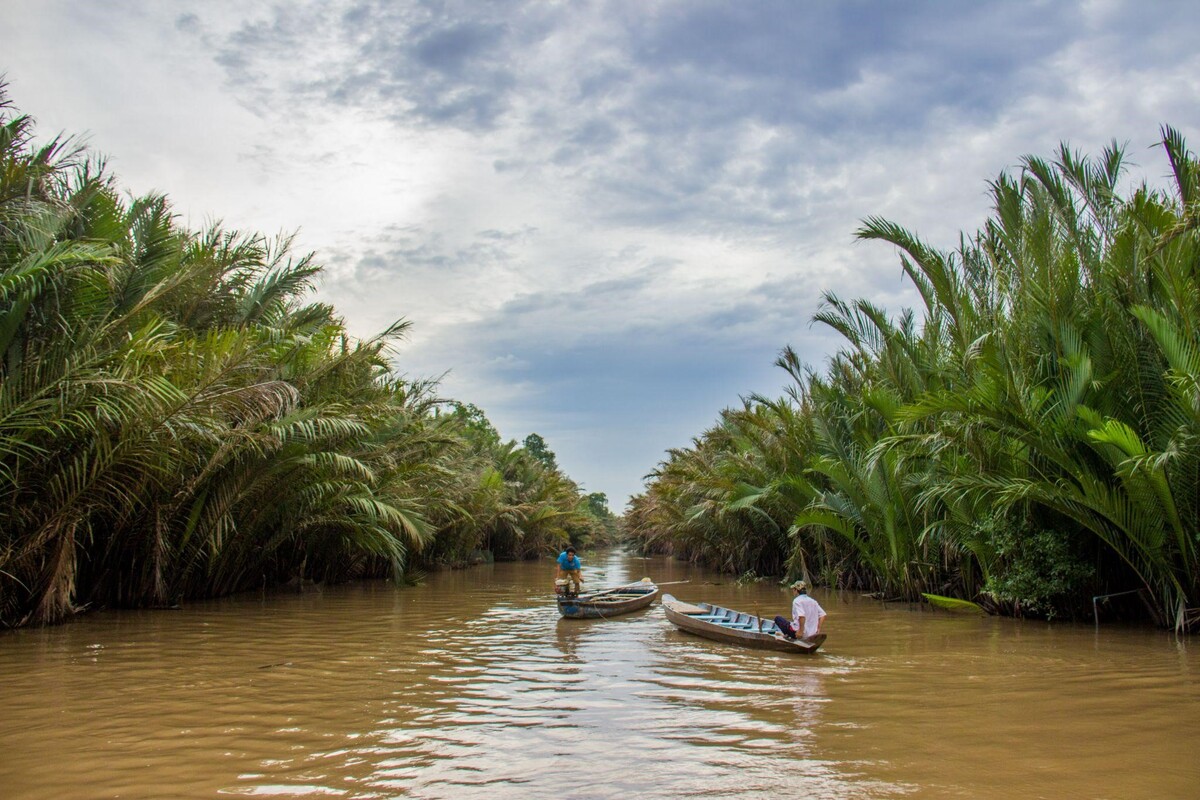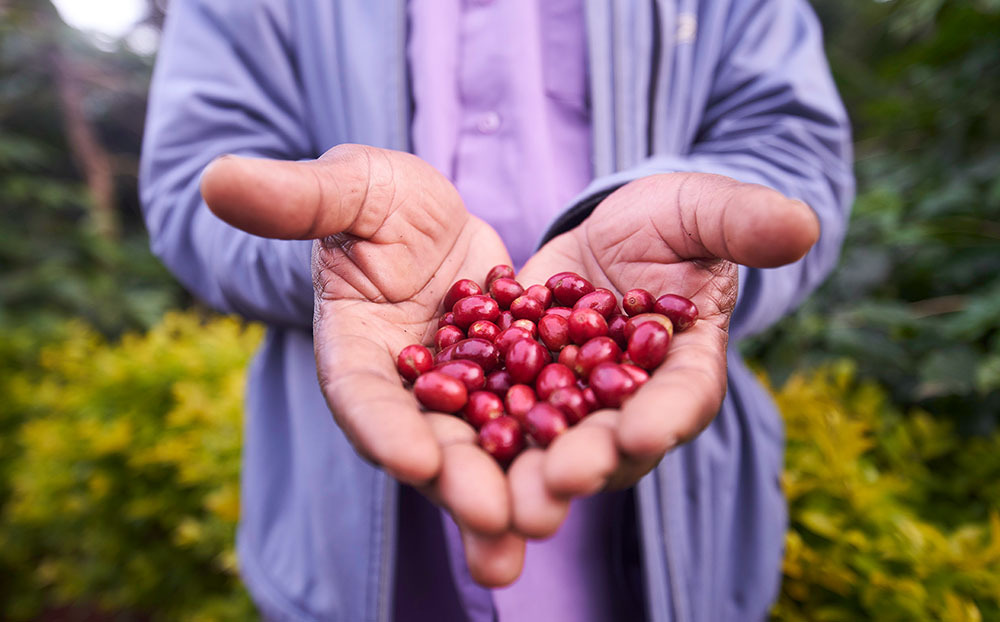
©FAO/Nguyen Minh Duc
Issue
Climate change is intensifying natural disasters, which are posing greater risks to vulnerable coastal communities affected by severe storms like typhoons. These disturbances can significantly impact the well-being of vulnerable people living near the coastline. In Vietnam, the approaching Typhoon Noru had a potentially disastrous impact on poor and near-poor households. This typhoon was not a one-off event, as farmers, fishermen, and livestock owners continually face livelihood loss from these storms.
Typhoons in Vietnam are a yearly occurrence, typically making landfall from June to December. These natural disasters bring torrential rains and dangerous flooding, inundating large areas for days. Loss of natural shoreline barriers due to rising sea levels has resulted in less protection against flooding. The Vietnam coastline also has become increasingly developed, putting more communities at risk.
Solution
FAO’s Anticipatory Action system aids and bolsters resilience before significant damage is incurred. FAO assistance includes the distribution of watertight drums and financial assistance to prevent the loss of assets and enable access to nutritious foods for families who otherwise might go without. As demonstrated in the September 2022 typhoon season, this system can prevent the loss of livelihood in affected communities.
Overview
The UN FAO’s Anticipatory Action system aims to address climate-related natural disasters and resulting humanitarian crises ahead of severe impacts. While more time allows for greater preparation, having the system in place also allows for rapid response, as was shown in Vietnam in 2022. FAO applied this proactive approach to reduce Typhoon Noru’s impact on poor households’ food security and financial security. The steps taken showed the vital role of anticipatory action and the importance of maintaining this system over the longer term.
Details
Typhoon Noru, in September 2022, was predicted to have a substantially damaging effect on the livelihood of vulnerable coastline-dwelling fishing and farming households in Vietnam. Anticipatory measures are needed to reduce adverse effects on these poorer households. The actions that the Food and Agriculture Organization of the United Nations (FAO) led can prevent the loss of livelihood among these communities. FAO worked with the Vietnam Disaster and Dyke Management Authority (VDDMA), Vietnam Red Cross Society, and Committee for Natural Disaster Prevention and Control (CNDPC), using funding from the Directorate-General for European Civil Protection and Humanitarian Aid Operations.
The FAO anticipatory action approach in Vietnam uses resource distribution and financial aid to assist households through natural disasters. Its preemptive actions – such as distributing watertight drums – help prevent the loss of assets that would be financially difficult for these households to replace.
Typhoon Noru preparations
Preparations for typhoon season began in Vietnam in late 2021 with the establishment of a triggering system for action. Two key systems were created: readiness actions would be initiated when a typhoon is tracking to hit one of the project’s target provinces, and anticipatory action would be activated 72 hours before landfall if the typhoon was either expected to have a windspeed above 100 km/h or rainfall of 429 mm in 72 hours.
Along with the triggering system, FAO conducted several community consultations before typhoon season to thoroughly understand the needs and challenges of the communities being served. Community input and buy-in to anticipatory measures are crucial for positive outcomes. Nearly 400 people took part in the consultations, which resulted in four initiatives:
- communication of warnings and preparations
- distribution of watertight drums for storage of assets
- provision of financial assistance
- access to temporary shelter for animal evacuation
FAO and VDDMA tested the initiatives during a two-day simulation. Based on the exercise, FAO adjusted the initiatives, which included providing cash instead of food packages, as cash allows families to prepare foods suitable to them.
After the simulation, FAO conducted preparedness activities, including developing standard operating procedures, establishing communication channels, and conducting a market assessment to gauge access to local markets before and after a typhoon and to identify suppliers of watertight drums and livestock tents.
In September 2022, in the three days leading up to Typhoon Noru, the FAO targeted vulnerable coastal households, including fishers, farmers, and livestock owners, who were most likely to experience the typhoon’s adverse effects on food and financial security.
Intervention in Vietnam
FAO’s approach to intervention in Vietnam was to distribute resources ahead of a typhoon. Six days before the landfall of Typhoon Noru, monitoring began as the forecast showed a potential tropical storm. The next day, preparedness measures were activated as the typhoon was confirmed. Anticipatory action was approved three days before landfall, and activities were quickly implemented in the two days before landfall. The typhoon made landfall in Vietnam on September 28, 2022, at 1 a.m. and was equivalent to a Category 1 hurricane: the lowest level, but still potentially damaging to fragile households.
Over the two-day period before landfall, the country team distributed aid to 600 households in the provinces of Huang Tai and Thua Thien Hue. This included providing 600 watertight drums and transferring cash equivalent to US$48 per household for 300 families.
The installation of one livestock evacuation shelter was planned but suspended, as floodwater was manageable in the impacted area. Financial aid distribution targeted vulnerable populations, such as older people, disabled or ill people, children, and poor households. The pre-approval of funding was crucial to the quick distribution.
The Government of Vietnam also played an important role, as local government officials took action with additional measures, such as closing schools, evacuating residents, and suspending markets.
Lessons learned from anticipatory action
FAO conducted a household survey six weeks after the anticipatory action, along with interviews and group discussions. A total of 115 beneficiary households were sampled, with another 102 sampled as a control group. The analysis found that for every US$1 invested in anticipatory action, households had a return of US$0.46.
This return on investment (ROI) was considerably lower than expected, especially when compared with other FAO efforts. However, the ROI may increase over time, as the expected return for every US$1 over 10 typhoon seasons is predicted at US$4.6.
Although the anticipatory actions didn’t pay for themselves, the program successfully protected the livelihoods of vulnerable people, ultimately achieving its intended purpose. The control group faced many challenges when compared with the beneficiary group, including being more likely to use negative coping mechanisms, reduce health expenses, withdraw children from school, and borrow food from others. The actions also heightened the sense of security regarding weather-related natural disasters in the future.
For more details on FAO anticipatory action in Vietnam, read the report available here.




